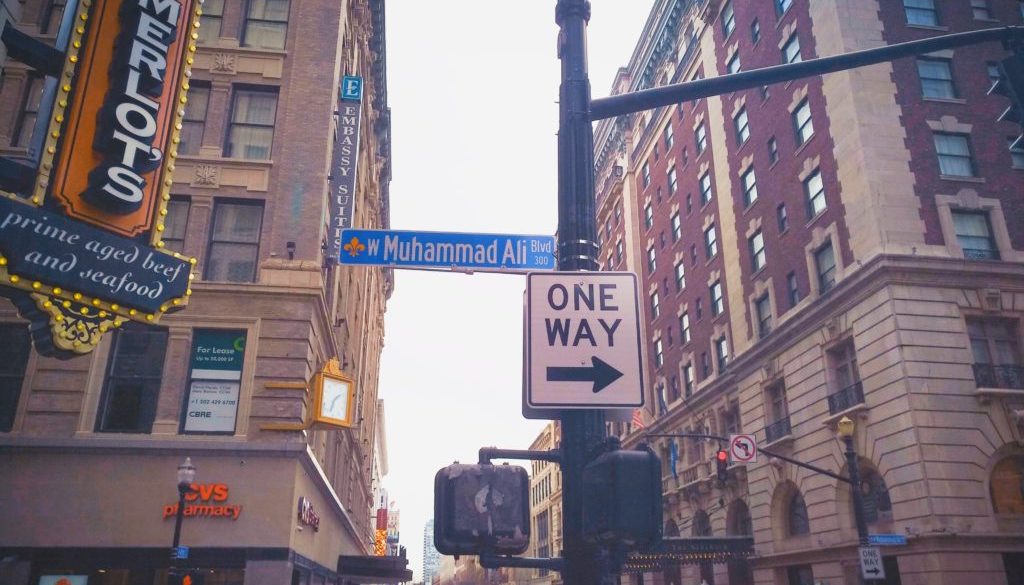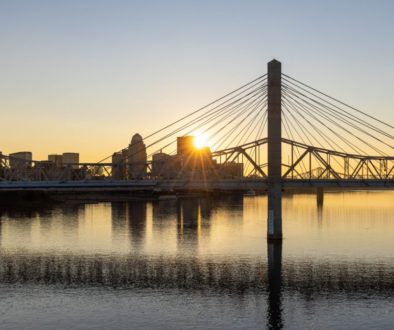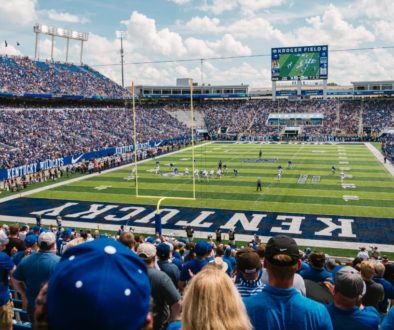DATE OF ANALYSIS
MARCH 12, 2007
PREPARED BY
DAVID J. GLAUBER, MAI
PRESIDENT
AMERICAN APPRAISERS CORPORATION
AMERICANAPPRAISERS.NET
10507 WATTERSON TRAIL
LOUISVILLE, KY 40299
PREPARED FOR
ECONOMIC DEVELOPMENT DEPARTMENT
444 SOUTH 5TH STREET
LOUISVILLE, KY 40202
March 16th, 2007
Economic Development Department
444 South 5th Street
Louisville, KY 40202
Dear Ms :
I have prepared a brief report, in relation to our phone conversation regarding the re-development of West Louisville. I am a commercial real estate appraiser in Louisville, but provide appraisal services nationally. Our firm has appraised property in 9 states within the past two years. We are currently involved in a market study of Fort Knox, relating to the possible release of some of the base property for independent development. This is a result of the Base Realignment and Closure (BRAC) program that is expected to create a net gain of 5,000 new permanent employees at Fort Knox. We have also performed many market studies in relation to specific projects, such as downtown residential condominium projects, subdivisions, CBD office towers, etc.
Over the years I have appraised countless industrial and retail properties in West Louisville. With each appraisal comes my analysis of the pros and cons of each site. Consequently, I have accumulated an enormous amount of professional observations which have culminated into a comprehensive plan to re-develop West Louisville.
I have prepared a brief description of the most important aspect of the plan, which will entail a new design of the corridors throughout the entire neighborhood. The later phases of the plan to include the industrial contamination and residential development are only briefly mentioned, as they are totally dependant on the creation of the corridors.
I have attached my qualifications at the back of this outline. If you have more questions or would like me to present this to other groups I would be happy to do so.
Sincerely
David J. Glauber, MAI
HISTORY OF WEST LOUISVILLE West Louisville was developed in the late 1800’s and early 1900’s as a working class neighborhood that provided labor to the numerous industrial facilities along the river and scattered throughout the area. There were no cars then and people had to walk to work or perhaps ride a trolley if one existed. Horses were likely only uses by more affluent workers that could afford to stable them. Consequently, the houses were inexpensive and close together in order to keep the density high and the walking commute short. As this situation changed with the addition of automobiles, industry moved further away. Interstates were built with the goal of moving traffic from one major location to another. When I-264 was built, it should have been a boon to West Louisville. However, poorly conceived interchanges left the area sealed off from the rest of the county, and the area began to decline and has continued unabated since the 1950’s despite millions of public dollars spent on re-vitalization efforts. The poor interstate access is further aggravated by large facilities such as Phillip Morris and Brown Foreman extending their facilities across city streets as well as railroad lines blocking streets. The remaining streets that still have their one-way status from a century ago, now only cause greater traffic problems.
The overall result is a huge resource that has been paralyzed for many years by poor access. Any driving experience in this neighborhood is frustrating and often results in getting lost. To a semi truck driver, this is simply not acceptable.
This re-development plan focuses entirely on creating corridors that will free the area from these traffic barriers. This report only discusses the major corridors, although there is also much to be done on the surface streets in order to provide easier traffic flow throughout the residential sections as well.
CORRIDORS FIGURE 1
Figure 1 identifies four potential east/west corridors that would effectively connect I-65 on the east side to I-264 on the west side of Louisville. These four corridors will be explained in more detail by order of importance.
BROADWAY Broadway is by far the most important corridor. Currently, Broadway extends all the way from I-65 to I-264 with no interruptions or barriers. However, when it reaches I-264, there is no interchange. In order to access I-264, the driver must cross under I-264, turn right on 34th Street, go north approximately four blocks and take a right on a one-way street known as River Park Drive. If the driver misses the on ramp, they must work their way around the block to another one-way street to re-approach on Mohammad Ali Blvd. If the vehicle is in a semi truck, the railroad overpass is too low to drive under and the truck is now paralyzed. He cannot back up, there is not enough room to turn around, and he can’t go forward because of the low overpass.
Broadway is arguably the most important street in downtown Louisville with a broad thoroughfare and large beautiful houses. Broadway currently carries around 28,000 vehicles per day, east of 7th Street when CBD vacancy is stabilized. The traffic falls to 17,000 at the Dixie Highway intersection and is not measured beyond that point, due to such low traffic counts.
This problem can be remedied with a new interchange onto I-264. The economic impact of this interchange would be dramatic. The affect would immediately create a focal point for retail as well as provide access to existing industrial buildings.
Additionally, many CBD office workers live in Indiana. Instead of crossing the city, they drive home via I-65, and go through spaghetti junction in order to access I-64. If Broadway were an open corridor, much of the I-64 traffic would return home through west Louisville. This would effectively reduce the pressure on spaghetti junction in addition to bringing fresh demand into the west. Given the enormous economic impact this interchange would create, it is considered priority 1.
VIRGINIA AVENUE, Virginia Avenue, which is know as Oak Street on the east side of the city is an existing corridor. Although this corridor is not particularly important, it does represent the easiest corridor to fix. The reason is that it runs from I-65 on the east to I-264 on the west without interruption. Additionally, there is already a usable interchange at both ends. The only modifications needed in order to make this an effective corridor, is to make it two-way. Currently this corridor is two-way on the east side, but turns into one-way on the west side. I would also suggest that the same street name be used from one end to the other.
The potential issue associated with making this corridor two-way involves street parking. Currently, residents park on both sides of the street, which allows two driving lanes. Although it is certainly possible to have two-way traffic on two lanes, it may not carry the volume of traffic required, and will be further disrupted by traffic making left turns. Therefore, the corridor will be much more usable if a turn lane can be added. If parking is eliminated on the street, it will make the corridor four lanes. The street parking could be replaced along the alley in the rear of these same houses. The alley right-of-way could be widened, paved and lined for angle parking, which would not only replace the existing street parking, but would be significantly more efficient thus giving the residents a net gain in parking, with the added advantage of having their vehicles sheltered from traffic on the street. The only exception to this is a few blocks between Dixie Highway and 26th Street where the yards are not deep enough to allow the alley to be widened to add parking. These houses are also lower quality structures that have also been poorly maintained. Therefore, buying the houses outright and razing them would likely be the best option.
Due to the ease of converting Virginia Avenue / Oak Street to a corridor, it is given priority two. The creation of parking behind the houses could come in a later phase.
ALGONQUIN PARKWAY This corridor is a major thoroughfare that includes a grand thoroughfare, with large houses well off the street under mature trees. It is truly a showpiece of West Louisville. This effect is enhanced by the one success story of West Louisville’s revitalization, which is Park Duval. The problem is, once again, a lack of an interchange on the west end. Algonquin also fizzles into oblivion at Taylor Blvd on the east.
The solution for this corridor is expensive. However, the potential enhancement of the area makes it a worthwhile endeavor. The first step is to make an interchange at I-264. Currently, the most attractive street in the neighborhood has to exit at Bells Lane, which is a very unattractive area and the re-entry ramp is even worse.
The second step is to extend Algonquin, where it can connect with either Cardinal Blvd or Eastern Parkway. In either case, the interchange on the I-65 end will also need to be enhanced.
DIXIE HIGHWAY All the corridors spoken of thus far have been east/west routes. However, Dixie Highway is another squandered resource. South of I-264, Dixie Highway is a thriving corridor, with extremely high traffic volume and very high land value. North of I-264, Dixie Highway becomes a run down corridor with abandoned buildings and very low land value. That being said, Dixie does maintain some of its appeal through Shively, and then it becomes extremely rough until it dead ends at Broadway. The reason for its lack of appeal is that it doesn’t go anywhere on the north end. Like many of the West Louisville corridors, it just fizzles out.
The north bound traffic can find its way to the I-64 ramp at 22nd Street by following Dr. Hodge Street. This is a very poor corridor with Dr. Hodge Street running one-way north and 22nd Street running one-way south. There is no advantage to having these streets be one-way and the interchange itself is very complicated.
This corridor could be untangled by re-routing Dixie Highway at Algonquin Street and connecting it to Dr Hodge Street or 22nd Street and running it all the way to the 22nd Street interchange. The street name would be changed to Dixie, so that a clear uninterrupted corridor was easily identifiable by drivers who are not familiar with the area. The interchange would also be re-named to Dixie Highway.
MARKET STREET OR MOHAMMED ALI BLVD These corridors will not have the dramatic impact the previously mentioned streets will. They are mentioned only because they are existing streets that extend the length of the city without interruption.
RESULT OF NEW CORRIDORS The result of the new corridors would have a profound affect on the entire neighborhood.
INDUSTRIAL There would be an immediate resurgence of industrial activity. There is an enormous supply of unused industrial space in West Louisville. The buildings were built in the late 1800’s and early 1900’s. Consequently, the functional design does not meet current standards. However, that is not why the buildings are vacant. The main reason for the high vacancy is poor access. Currently, there are no good corridors through West Louisville and a driver of a semi truck can easily get lost and not be able to turn around due to a multitude of obstacles, such as pointless one-way streets, dead end streets, low Railroad overpasses, etc. The new corridors would make access in and out easily identifiable and reliable, even for drivers unfamiliar with the area.
INDUSTRIAL CONTAMINATION Another aspect that holds back the re-use of old industrial buildings is the contamination that remains from previous uses. We also have some suggestions on how to alleviate this risk to a buyer, making it safe for someone to purchase an old facility without the risk of cleanup cost. I have not pursued it in this report in order to keep the focus on corridors.
RETAIL The second affect would be retail. When office vacancy is low in downtown Louisville, the traffic count is circa 28,000 cars per day on Broadway, east of 7th Street. This drops to 17,000 at the Dixie Highway intersection and is not measured beyond that point due to the substantial drop in traffic. Additionally, there are currently 56,500 vehicles per day crossing Broadway as they travel I-264. Many of these travelers work at UPS and the Fern Valley Road Ford Plant and are driving home to Indiana. There is no interchange for them to stop and get gas or refreshments during the entire trip across west Louisville. Dixie Highway is the only reliable interchange, and the traffic at this interchange is so heavy that getting off and on is not feasible. By having an organized ramp at Broadway and Algonquin that can be easily understood and navigated, travelers would exit this ramp in search of gas and refreshments. Therefore, a retail focal point would emerge, which would immediately result in a convenience / fuel store, followed by other competing stores. These would be followed by fast food. With a retail anchor on the west end of Broadway, retail would then fill the gap that currently exists between the CBD and I-264. This would allow such projects that are currently being considered in the Phillip Morris plant the chance of success.
RESIDENTIAL The residential sector should be considered last. You cannot force people to live in an area that the market pushes them away from. The current method is to buy an old house, raze it and build another identical house on the site. This changes nothing. The product is the same, the people are the same, and the environment is the same. This is repeating the same mistake over and over again, with the expectation of a different outcome.
West Louisville has had an oversupply of houses for many years due to a lack of demand. Consequently, houses sit vacant and are abandoned. As of March 6/2007, there were 973 houses currently for sale by Real estate agents. 77 homes had sold over the past 30 days, with a median selling price of $36,000. This clearly illustrates the over supply of housing. Therefore, when a major housing project such as Parkhill is considered for demolition, critics worry about displacement of residents. This is an unfounded concern, as there is an overabundance of housing in the neighborhood.
If the corridors are repaired and traffic can move freely, the industrial sector will re-enter the area, bringing jobs. Additionally, long vacant buildings will be occupied, eliminating a constant source of crime. The retail that will also enter the market will be another, albeit smaller source of jobs. With employment comes income for residents and demand for housing close to work. The demand will cause a decrease in the supply of houses. With the reduction in supply, the increasing demand will obviously increase housing prices. With increased housing prices, the houses will start trending back to owner occupied houses rather than renters. The synergy continues until a fully revitalized and stable community exists.
QUALIFICATIONS OF DAVID J. GLAUBER, MAI
EDUCATION
University of Louisville, Post Graduate work 6 hours
University of Louisville, Bachelor of Finance, 1991
Carroll County High School , 1986
Appraisal Institute
-Appraisal Principles, Methods and Techniques, University of .N.C, 1988
-Appraisal Principles, Methods and Techniques, part 2, Dartmouth college 1988
-Residential Appraisal Techniques, University of Portland, 1989.
-Report Writing, Chicago , IL, 2001
-Advanced Income Capitalization, University of Indiana Bloomington, IN 2001
-Advanced Sales and Cost, Indianapolis, IN 2001
-Advanced Applications, Chicago, IL, 2002
-Standards of Professional Practice Part A and B, 2002
-Highest and Best Use Analysis, Tamp FL, 2002
-Comprehensive Exam Appraisal Workshop, Irvine TX 2002
-Evaluating Commercial Construction, Columbus, OH 5/2004
-Evaluating Residential Construction 5/2005
-Subdivision Analysis 2007
IDS Financial Services
-Financial Planning Workshop, 80 hours, Minneapolis Minnesota, 1992
-NASD Series 7 license Workshop, 40 hours, St. Xavier University,
Louisville Board of Realtors
-Uniform Standards of Professional Appraisal Practice, Louisville KY, 1997
-Small Income Properties
-Farm and Rural Property Appraisal
APPRAISAL EXPERIENCE
American Appraisers Corp. President / Owner 2005
Roppel Appraisal Service: Commercial Real Estate Appraiser 2000-2004
Lewman-Miller Appraisal Co: Commercial Real Estate Appraiser 1999
Tamplin & Company: Commercial Real Estate Appraiser 1999
Moore & Associates: Residential Real Estate Appraiser 1997
Allgeier Company: Commercial Real Estate Appraiser 1995
McDonogh & Associates: Commercial Real Estate Appraiser 1987-1991
Glauber Real Estate: Residential Real Estate Appraiser 1986
FINANCIAL EXPERIENCE
American Express Financial Advisors: Financial Advisor 1991-1995
Safetran Systems: Financial Analyst 1997
PROFESSIONAL AFFILIATIONS
Appraisal Institute, Member, # 12140 Certified General Indiana (CG 40300051)
Certified General Kentucky (CG 2506)
Knights of Columbus


